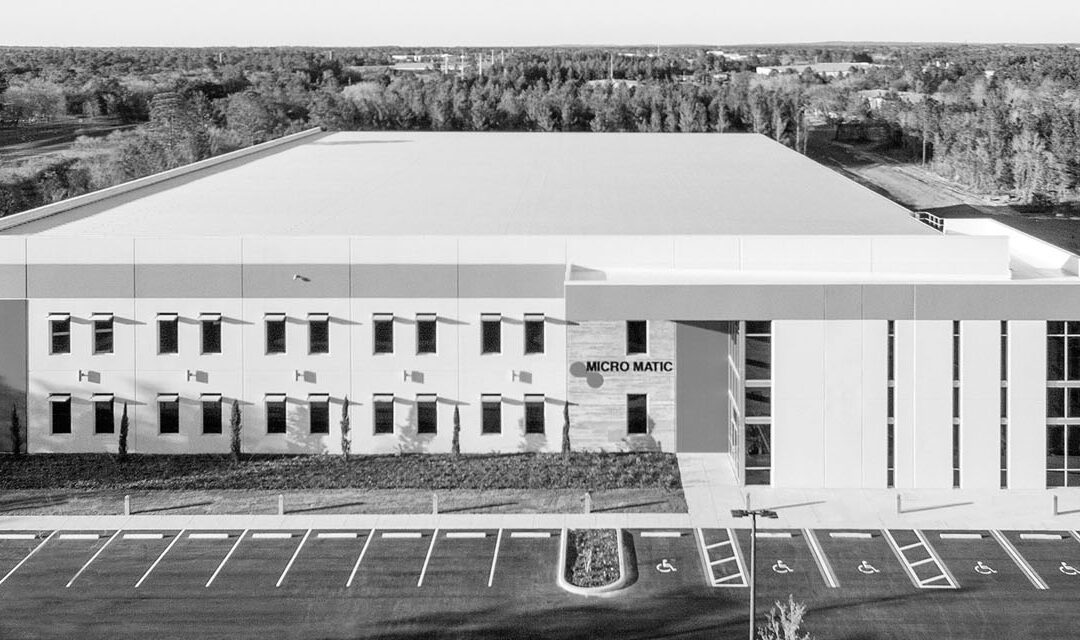Standing seam roof systems are known as one of the best options for keeping buildings safe and leak-free. These roofs use advanced designs and high-quality engineering to stand up to harsh weather and protect against water damage. Butler Manufacturing’s MR-24 roof system is one of the best examples of this technology. Let’s take a closer look at what makes standing seam roofs so reliable and leak-proof.
1. Seam Design That Keeps Water Out
The seam is one of the most important parts of any roof. Butler’s standing seam roof, the MR-24, uses a unique 360-degree Pittsburgh double-lock seam that creates a water-tight seal. This is the same seam you’ll find in a Coke can. Butler takes this a step further with their Roof Runner machine, which locks the seams together with 3,800 pounds of pressure. This creates a strong, watertight barrier that can handle heavy rain, snow, and wind. Unlike other roofing systems that use exposed fasteners (a common cause of leaks), standing seam roofs hide the fasteners under the panels, keeping water out entirely.
2. Adapting to Temperature Changes
Metal roofs expand and contract as the weather changes. If the roof can’t handle this movement, it can create stress on the seams and lead to leaks. Butler’s MR-24 system solves this problem with sliding roof clips. These clips let the panels move freely as the temperature rises and falls. The MR-24 system is designed to allow up to 2.5 inches of thermal expansion and contraction without damaging the seams. This feature keeps the roof secure and leak-free, even after years of changing weather conditions.
3. Precision Engineering for Perfect Alignment
Another reason standing seam roofs are so leak-proof is how precisely they’re built. Butler’s MR-24 panels are factory-punched to ensure they line up perfectly during installation. This level of precision prevents gaps and misalignments, which are common causes of leaks in less advanced systems. Factory punching also speeds up the installation process and reduces human error. When every piece fits together exactly as it should, the roof becomes stronger and better at keeping water out.
4. Staggered Splice Design to Prevent Weak Points
Roof splices—where panels connect—are one of the most vulnerable parts of any roof. Many traditional systems align these splices in a straight line, creating weak points where leaks are more likely to occur. The MR-24 system uses a staggered splice design, which spreads the pressure across multiple points. These splices are also supported directly over structural members to give them extra strength. On top of that, Butler applies a special butyl rubber tape to seal the splices. This tape stays flexible over time, ensuring a watertight connection even in harsh weather.
5. Tested and Proven to Perform
Butler doesn’t just design roofs that look good on paper—they put their systems through rigorous testing to ensure they perform in real-world conditions. The MR-24 system has passed the tough UL Class 90 wind uplift tests and can withstand hurricane-force winds. It’s also been tested to handle heavy rain, snow loads, and extreme temperatures without leaking. Butler’s Guarded Hot Box measures how well their roofs handle temperature changes and keep buildings insulated. This commitment to testing ensures the MR-24 system stays watertight and energy-efficient for decades.
Wrapping Up
Standing seam roof systems, like Butler’s MR-24, are designed to handle whatever nature throws at them. From the watertight double-lock seam to thermal expansion clips and staggered splices, every part of the roof is built to last. These systems have been tested and proven to perform, making them one of the best choices for commercial and industrial buildings. If you want a roof that can protect your building for decades while preventing leaks, reach out to us at MAR Building Solutions, Kansas City’s Butler Builder.


